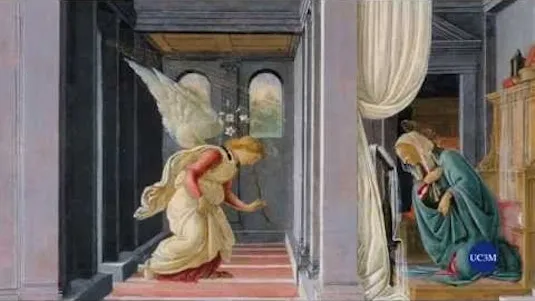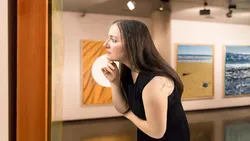
European Paintings: From Leonardo to Rembrandt to Goya 
This course explores the works of some of the most influential European painters from 1400 to 1800, including Leonardo da Vinci, Caravaggio, Velazquez, Rembrandt, and Goya. Students will gain an understanding of the issues expressed through the art of painting and the impact of these artists on the history of European painting. ▼
ADVERTISEMENT
Course Feature
![]() Cost:
Cost:
Free
![]() Provider:
Provider:
Edx
![]() Certificate:
Certificate:
Paid Certification
![]() Language:
Language:
English
![]() Start Date:
Start Date:
Self paced
Course Overview
❗The content presented here is sourced directly from Edx platform. For comprehensive course details, including enrollment information, simply click on the 'Go to class' link on our website.
Updated in [March 06th, 2023]
This course provides an overview of the works of some of the most influential European painters from approximately 1400 to 1800. Students will explore the issues expressed through the art of painting, such as the pursuit of beauty, the pleasures and pains associated with love, the demonstration of power and status, and the relationship of men and women to the divinity and to nature. Through the study of paintings by artists such as Leonardo da Vinci, Caravaggio, Velázquez, Rembrandt, Vermeer and Goya, students will gain insight into the emergence of the modern mind set. Discussions in the course forum will allow students to touch upon a broader range of issues.
[Applications]
Upon completion of this course, students can apply their knowledge of European paintings from the 1400s to 1800s to their own work. They can use the techniques and ideas of the great painters to create their own works of art. Additionally, students can use the knowledge gained from this course to better understand the history of European painting and the issues that were important to the painters of the time.
[Career Paths]
1. Art Historian: Art Historians specialize in the study of art and its history. They research and analyze the works of art from different periods and cultures, and interpret their meaning and significance. They also write about art and its history, and may work in museums, galleries, or universities. Art Historians must have a deep understanding of the history of art, and be able to interpret and analyze works of art.
2. Art Conservator: Art Conservators specialize in the preservation and restoration of works of art. They use a variety of techniques to preserve and restore works of art, and must have a deep understanding of the materials and techniques used in the creation of art. Art Conservators must also be knowledgeable about the history of art, and be able to identify and authenticate works of art.
3. Art Curator: Art Curators are responsible for the care and display of works of art in museums and galleries. They must have a deep understanding of the history of art, and be able to identify and authenticate works of art. Art Curators must also be knowledgeable about the materials and techniques used in the creation of art, and be able to interpret and analyze works of art.
4. Art Dealer: Art Dealers specialize in the buying and selling of works of art. They must have a deep understanding of the history of art, and be able to identify and authenticate works of art. Art Dealers must also be knowledgeable about the materials and techniques used in the creation of art, and be able to interpret and analyze works of art. They must also be knowledgeable about the current market for works of art, and be able to negotiate prices and terms of sale.
[Education Paths]
1. Bachelor of Arts in Art History: This degree program provides students with a comprehensive understanding of the history of art, from the Renaissance to the present day. Students will learn about the development of art styles, techniques, and movements, as well as the social and political contexts in which they were created. This degree program is ideal for those interested in pursuing a career in the art world, such as curators, art historians, and museum professionals. Developing trends in this field include the use of digital technologies to create virtual exhibitions and the use of social media to promote art and culture.
2. Master of Arts in Art History: This degree program provides students with an in-depth understanding of the history of art, from the Renaissance to the present day. Students will learn about the development of art styles, techniques, and movements, as well as the social and political contexts in which they were created. This degree program is ideal for those interested in pursuing a career in the art world, such as curators, art historians, and museum professionals. Developing trends in this field include the use of digital technologies to create virtual exhibitions and the use of social media to promote art and culture.
3. Master of Fine Arts in Painting: This degree program provides students with an in-depth understanding of the techniques and processes of painting, from the Renaissance to the present day. Students will learn about the development of painting styles, techniques, and movements, as well as the social and political contexts in which they were created. This degree program is ideal for those interested in pursuing a career in the art world, such as painters, illustrators, and art teachers. Developing trends in this field include the use of digital technologies to create virtual paintings and the use of social media to promote art and culture.
4. Doctor of Philosophy in Art History: This degree program provides students with an advanced understanding of the history of art, from the Renaissance to the present day. Students will learn about the development of art styles, techniques, and movements, as well as the social and political contexts in which they were created. This degree program is ideal for those interested in pursuing a career in the art world, such as curators, art historians, and museum professionals. Developing trends in this field include the use of digital technologies to create virtual exhibitions and the use of social media to promote art and culture.
Course Provider

Provider Edx's Stats at AZClass
Discussion and Reviews
0.0 (Based on 0 reviews)
Explore Similar Online Courses

Introduction to Machine Learning Course

Logistics Fundamentals

Python for Informatics: Exploring Information

Social Network Analysis

Introduction to Systematic Review and Meta-Analysis

The Analytics Edge

DCO042 - Python For Informatics

Causal Diagrams: Draw Your Assumptions Before Your Conclusions

Whole genome sequencing of bacterial genomes - tools and applications

The Places of Teaching Artistry

Art 104: History of Western Art II

Art 103: History of Western Art I
 Related Categories
Related Categories
 Popular Searches
Popular Searches
Quiz
 Submitted Sucessfully
Submitted Sucessfully
1. Which of the following painters is not included in the course syllabus?
2. What is the main focus of the course?
3. What type of discussions will take place in the course forum?
4. Which of the following artists is included in the course syllabus?
5. Who is one of the painters discussed in this course?
Correct Answer: Leonardo da Vinci


Start your review of European Paintings: From Leonardo to Rembrandt to Goya